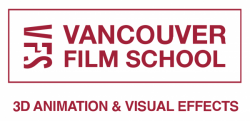
Vancouver Film School’s award-winning 3D Animation & Visual Effects program gets you trained, hired, & working in just 12 months. Specialize in your choice of 3D Animation, Modeling, or VFX, and join an industry worth over $32 billion. Learn More.
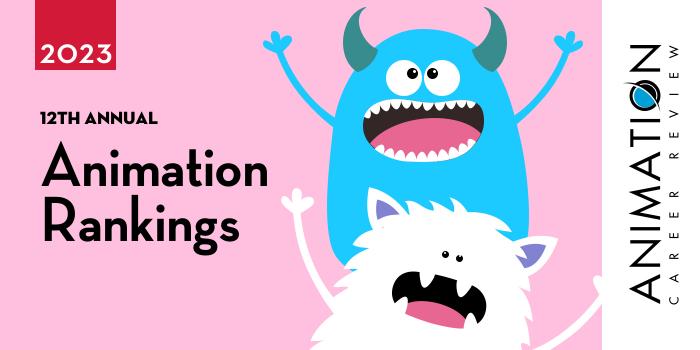
| Ranking | School | Province |
|---|---|---|
| 1 | Sheridan College | Multiple |
| 2 | Emily Carr University of Art + Design | Vancouver |
| 3 | Ontario College of Art and Design | Ontario |
| 4 | Université Laval | Quebec |
| 5 | York University | Ontario |
For this ranking we only consider formal degree programs (bachelor's degree or equivalent). For an explanation of our ranking criteria, click here.

Sheridan College (Sheridan) houses Canada’s largest art school—the Faculty of Animation, Arts & Design (FAAD). Referred to as the “Harvard of Animation” the FAAD has Bachelor’s and Graduate Certificate Programs in Animation, Computer Animation, and Digital Creature Animation-Technical Direction. The Bachelor’s Degree Program takes four years to complete and the Certificate Programs can be completed in just one year.
Across programs, features include collaboration on projects in an immersive, hands-on, studio environment; access to state-of-the-art facilities at the SCAET (Sheridan Centre for Animation and Emerging Technologies); and study abroad opportunities at Dun Laoghaire Institute of Art and Design (IADT) in Ireland.
A major component of the FAAD Animation Programs is mandatory three-month work placement, which allows students to gain professional work experience in the field prior to graduation. Students will also participate in Sheridan’s Annual Industry Day, where they will meet with employers from across North America. Examples of sponsors include DreamWorks, Illumination, Wacom, Wild Brain Studios, Big Jump, HP, Toronto Animation Arts Festival International (TAAFI), House of Cool, Atomic Cartoons, Jam Filled, Brown Bag Films, NVIDIA, Mercury Filmworks, and Switch VFX.
Upon completion of the Animation Programs at Sheridan College, students will have a professional demo reel of their best work. Program alumni work in television, film and feature animation at major studios in Canada and across North America.
Serving 31,080 students, Sheridan College is one of Canada’s largest universities by enrollment. This public Polytechnic Institute employs 3,380 employees, which also makes it one of the top 10 largest employer’s in Oakville. Established in 1967, Sheridan College provides more than 140 programs across five faculties and three campuses including Davis (Brampton, Ontario), Hazel McCallion (Mississauga, Ontario), and Trafalgar Road (Oakville, Ontario).

The Ian Gillespie Faculty of Design + Dynamic Media at Emily Carr University of Art + Design (ECU) houses the Bachelor of Media Arts (BMA) Program. Within the Program are two options for Animators: 2D + Experimental Animation and 3D Computer Animation. Emily Carr is the only school in British Columbia to offer a Bachelor’s Degree in 3D and CG Animation.
Both ECU BMA Programs require 120 credit hours, beginning with the 30 credit-hour Foundation Year. During this time, students will experiment and participate in hands-on activities in the dedicated Foundation Studio, while learning about studio practices and developing technical skills. Foundation Year courses explore Art, Design, and Media. In addition, all first-year students will be enrolled in the Foundation Forum Lecture Series, which hosts speakers and guest artists.
Other BMA Program features include access to a state-of-the-art Animation Studio, Sound Lab, Editing Suites, and the Film + Screen Arts Studio; the opportunity to Minor in Art + Text, Curatorial Studies, or Social Practice + Community Engagement; the DDM Speaker Series; Internships and connections to local Animation studios; admission to festivals, networking events, and conferences; and access to additional on-campus shops and studios such as Basically Good Media Lab, Integrated Motion Studio (motion capture), Digital Fabrication Lab, Mixed Reality Lab, the Soft Shop, Sculpture areas, and more.
The 2D + Experimental Animation Program at Emily Carr University of Art + Design explores Industry-Standard Digital Technologies, Stop Motion, Storytelling, Traditional and Digital Drawing Methods, Filmmaking, Motion Graphics, and Advanced Production Techniques. Course examples include Character Animation I & II, Creative Development for Animation Filmmaking, Storyboarding, Experimental Animation, Story & Structure for Animation, Layout, and Character Design.
The ECU 2D + Experimental Animation BMA Program culminates with Senior Animation Production I & II, where students work through their final projects with guidance and advice via one-on-one communication with instructors and peers. Students in these 400 level courses will also participate in workshops and attend lectures and presentations.
The 3D Computer Animation BMA at Emily Carr explores Visual Effects (VFX) Techniques, 3D Modeling, Lighting and Rendering, Character Animation, Texturing, Storytelling, Grading, and Production Methodology. Students in this program also have opportunities to partner with international institutes and work across Game Development, Film Production, and Research.
Course examples include 3D Layout and Cinematography, Look Development for 3D Computer Animation, Lighting + Rendering Projects, 3D Character Creation, Digital Compositing, and Preproduction for 3D Animation. The program culminates with the Senior 3D Animation Production course, which consists of lectures, presentations, and one-on-one consultation with the instructor.
Final 3D Computer Animation projects are either student-initiated or initiated through partnerships with clients and research groups. Projects may include films, installations, interactive environments, or other works that feature advanced 3D computer animation techniques.
Graduates of the Animation BMA Programs at Emily Carr University of Art + Design are prepared for careers in Animation, VFX, Virtual and Augmented Reality (VR/AR), Character Animation, Game Production, Advertising, Feature Film Production, Motion Graphics, Auteur Filmmaking and Gallery Exhibition, Studio Direction, and Illustration.
Graduates of the BMA Programs at Emily Carr University of Art + Design have been recruited by major studios and organizations such as DreamWorks Animation, Pixar, Industrial Light and Magic (ILM), Universal, and the National Film Board.
Founded in 1925, Emily Carr University of Art + Design is one of British Columbia’s oldest universities, and the only one that focuses on professional education and learning in Design, Media and the Arts. The school serves more than 2,000 degree-seeking students and 1,900 non-degree students across four Faculties including Ian Gillespie Faculty of Design + Dynamic Media, The Faculty of Culture + Community, Audain Faculty of Art, and Jake Kerr Faculty of Graduate Studies. Programs at ECU include 15+ undergraduate options, three graduate options, and 12 Continuing Studies options leading to a Certificate.
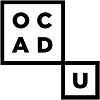
The Faculty of Art at Ontario College of Art and Design (OCAD U) has an Experimental Animation Program that combines Contemporary Art with Augmented and Virtual Reality (AR/VR), 2D and 3D, Digital Compositing, and Stop Motion. Students have opportunities to develop skills in other areas of Art and Design through more than 90 elective options.
Leading to a BFA, the Experimental Animation Program provides access to projects with real-world industry partners and experiential learning placements such as co-ops and summer internships. Study abroad experiences are also available at the OCAD campus in Florence, Italy or another Art and Design school through OCAD U’s Mobility/Exchange Program.
Other program features include the opportunity to exhibit at Toronto’s largest free art and design exhibition—GradEx at OCAD U, and automatic membership at the non-profit XSPACE Cultural Centre, which houses the student-run gallery—XSPACE. The gallery provides a platform for emerging artists of all kinds.
In addition, all Ontario College of Art and Design programs allow students to take a minor in a secondary field of study. More than 25 focused minors are available. Examples include Games and Play, Digital Media, Entrepreneurship and Social Innovation, Illustration, On-Screen, Art and Social Change, Communication Design, and Integrated Media.
The Experimental Animation BFA Program at OCAD U prepares students to pursue careers in both Animation and Gaming as well as Film, Video, and TV Production.
For students in other majors who would also like to study Animation, Ontario College of Art and Design has a Minor in Experimental Animation which can be added to any OCAD U program. An Animation Skills Certificate consisting of five courses (including three elective courses) is also available. Sampe courses include Stop-Motion Puppet Making Studio, Animation Studio, and Storyboarding for Media Production.
A collaboration of the Faculties of Art, Design and Liberal Arts & Sciences, the Experimental Animation Minor combines Media Art, Graphic Design, Drawing, and Experimentation. Course examples include Animation Reframed, 3D Modeling & Animation, Experimental Animation, Animated Illustration, Advanced Animation Studio, and Animation-Stop-Motion. The Experimental Animation Minor at OCAD U can also be taken as a Post-Graduate Certificate.
Established in 1876 as Ontario School of Art, Ontario College of Art and Design is Canada’s oldest art and design school. Serving approximately 4,190 students, OCAD U is also the country’s largest art and design school. Ontario College of Art and Design provides nearly 30 degree programs and close to 30 Minors across the Faculty of Art, Faculty of Design, and Faculty of Arts & Science.
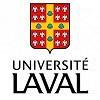
Université Laval is home to the Faculty of Planning, Architecture, Art and Design (FAAAD), which houses the School of Design. Within the School are two paths to study Animation including the Bachelor of Animated Arts and Science (BASA) and the Certificate in the Art and Science of Animation (CASA).
Consisting of 90 credits taken over three years, the Bachelor of Animated Arts and Science is a collaborative, project-based program that explores games, cinema, 3D virtual environments, and design. Course examples for the program include Animation Theories I-II, Stop Motion, Digital Image in Animation, Sound Dimension of Animation, Game Design and Interface Ergonomics, Storyboard, 3D Character Animation, CGI III: 3D Effects, Short Film Script, Organic Modeling, and Graphic Animation (Motion Design).
All BASA students have opportunities to complete group and individual projects, gain work experience through an internship at a professional studio, and complete a final portfolio of their best work. Students will also participate in the Université Laval Placement Service (SPLA) event, which attracts employers from the animation industry.
The Certificate in the Art and Science of Animation at Université Laval is a flexible, 30 credit hour program that can be completed entirely online in one year. CASA students may choose a full-time or part-time schedule. Course examples for the program include History and Aesthetics of Video Games, Digital Image in Animation, Storyboarding, 3D Modeling and Animation, Sound Dimension of Animation, Animation Methodology, and Animation Production.
Students in all Université Laval Animation Programs have access to state-of-the-art digital video studios, sound capture and editing laboratories, a motion capture and facial capture system, and an entertainment room with green screen.
Graduates of the Animation Programs at Université Laval are prepared for careers in Animation, Film and Television, Game Design and Development, Visual Effects (VFX), Multimedia production, Web Design, Architecture, Scientific Visualization, and Directing.
Université Laval dates back to 1663 when Séminaire de Québec was founded. The school was officially established in 1852 after Queen Victoria signed a royal charter allowing Séminaire de Québec to confer degrees and operate as a university. Today, Université Laval serves more than 47,000 students enrolled over 500 programs across 17 faculties and 60+ departments, schools, and institutes.
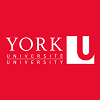
York University (York U) has a Digital Media Arts (DMA) Program jointly provided by the School of the Arts, Media, Performance, and Design (AMPD) and Lassonde School of Engineering. Digital Media Arts is Ontario’s only degree program that integrates Art, Engineering, and Computer Science.
Leading to a BA, the DMA Program allows students to study Animation through coursework and electives across AMPD and Lassonde. Examples include Effects and Animation, 3D Modeling and Simulation, Physical and Virtual Worlds, AR/VR, Graphics and Visualization, Artificial Intelligence, User Interfaces, Data Mining, and Interfaces.
Students will also study code and programming tools for games, interactive performance, the internet of things (IoT), immersive and 3D environments, and data visualization. After completing the 18-month core, students will have the opportunity to choose from three Streams (Specializations) including Digital Media Game Arts, Digital Media Arts, and Digital Media Development. Game Arts provides courses such as Introduction to 3D Animation, Simulation and Animation for Computer Games, and Introduction to Modeling.
Other program features include Collaborative Project Development courses; access to state-of-the-art classrooms, labs, studios, and research facilities; and opportunities to gain experience through the York U Technology Internship Program and public showings at Digifest, Interaccess, and Ontario Science Centre.
The DMA Programs at York University culminate with a Digital Media Capstone Project. Graduates of the program are prepared to pursue careers in a variety of fields. Program alumni have gone on to become Animators, Game Developers, Illustrators, UI/UX Designers, AI Software Developers, Cartoonists, VFX Artists, Developers, Technical Artists for Video Games, Directors, and New Media Artists.
Established in 1959 and serving more than 52,000 students from 178 countries, York University is the third largest university in Canada. This teaching and research university provides more than 200 undergraduate and graduate degree programs across 11 faculties and schools.